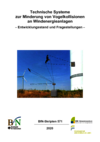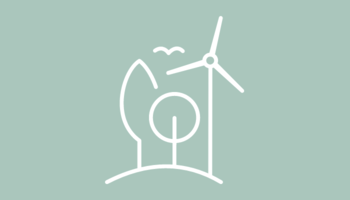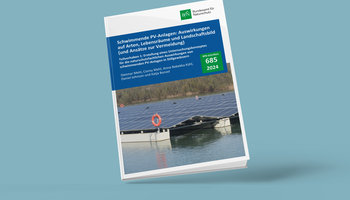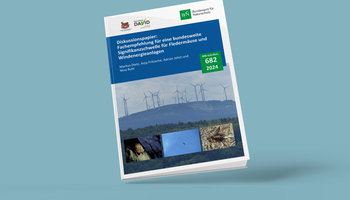Automatic bird detection systems have, in conjunction with the event-related operational curtailment of wind turbines, have the potential to reduce conflicts with the species protection law. The results from independent system tests will provide information on how efficient the individual systems are. The R&D project includes a series of events in which recommendations on minimum requirements for the effectiveness of detection systems will be developed in order to initiate a consensus-building process and promote further knowledge transfer.
In order to achieve the goals of the German federal government for the conservation of biodiversity and the expansion of renewable energies in equal measure, it is important to avoid conflicts between certain wind energy-sensitive species and the expansion of wind power by selecting suitable locations. At the respective sites, the remaining conflicts under species protection law must be mitigated to the extent that no prohibitions are fulfilled (here: the prohibition of killing according to Section 44 (1) of the Federal Nature Conservation Act, BNatschG). For this purpose, effective protection measures must be in place.
The introduction of detection systems – especially radar and camera systems – for automated bird detection is seen to have the potential to reduce collision risks of wind energy-sensitive bird species with wind turbines. The first results from independent system trials currently underway in Germany are expected in the first half of the year 2020. If they prove to be effective, technical recommendations will be required to regulate in which planning situations they could be applied and how they could be integrated into wind farm permits.
The Competence Centre for Nature Conservation and Energy Transition (KNE) will hold a four-part workshop series in 2020. This is intended to initiate the consensus-building process on effectiveness requirements and possible areas of application for detection systems for event-related operational regulation. During workshop series, technical recommendations are to be developed and discussed with experts. The project complements, among other things, the research activities funded by the Federal Agency for Nature Conservation (BfN) at the southern German wind test site (NatForWINSENT II).
The focus is on formulating minimum requirements for the suitability and effectiveness of systems as mitigating measures – in general, but also in individual cases. The assessment of system performance (e. g. spatial and temporal coverage, detection range and rate, classification success) as well as the related questions (e. g. definition of the maximum safe rotor speed during curtailment and classification success) are of primary importance: Definition of the maximum safe rotor speed during curtailment and the species-specific reaction range, application of bird deterrents). It will be necessary to differentiate which requirements are desirable for species conversation, legally required and, last but not least, practicable and proportionate.
Another focus will be the development of guidelines for possible areas of application of automatic detection and shut-off systems in an existing planning and licensing context. In addition, the question of ensuring the controllability of an event-related shutdown by the authorities also arises in particular.

Anforderungen an technische Überwachungs- und Abschaltsysteme an Windenergieanlagen (2021)
BfN-Skripten 610 (2021)

Technische Systeme zur Minderung von Vogelkollisionen an Windenergieanlagen
BfN-Skripten 571 (2020)
Competence Centre for Nature Conservation and Energy Transition (KNE)
Kochstr. 6-7, D-10969 Berlin
Projektleitung: Dr. Elke Bruns
Tel: +49 30 7673738 20
elke.bruns(at)naturschutz-energiewende.de
Federal Agency for Nature Conservation (BfN)
FG II 4.3 Nature conservation and renewable energies
Alte Messe 6, D-04013 Leipzig
Jens Ponitka
jens.ponitka(at)BfN.de
03.04.2024
Weiter

03.04.2024
Weiter

19.03.2024
Weiter
